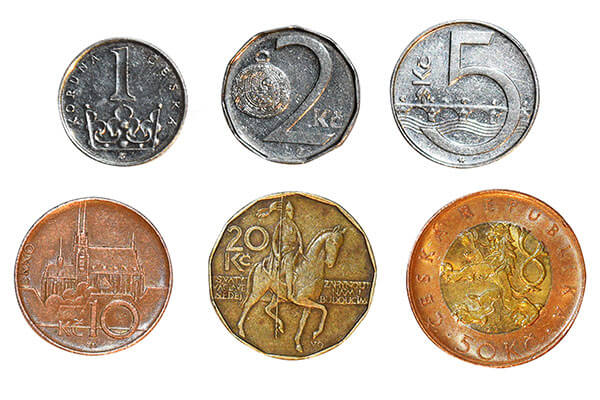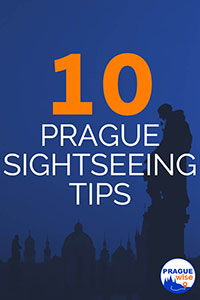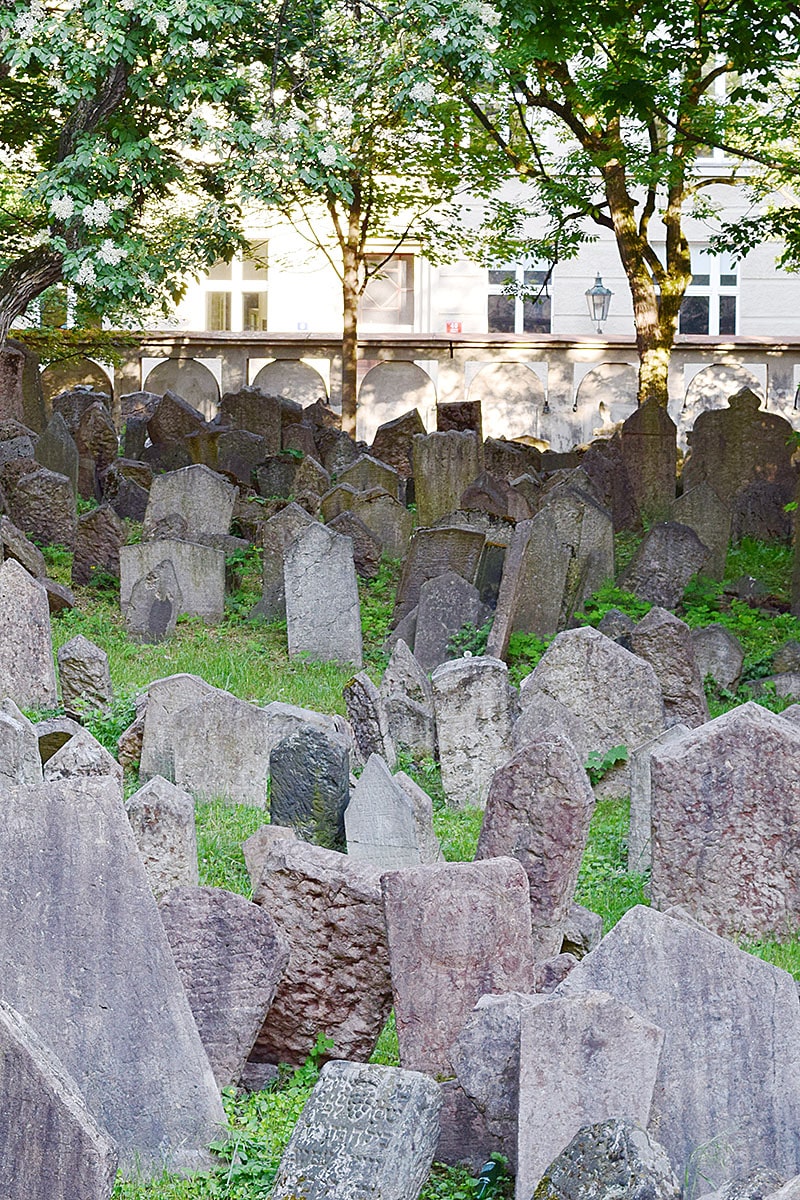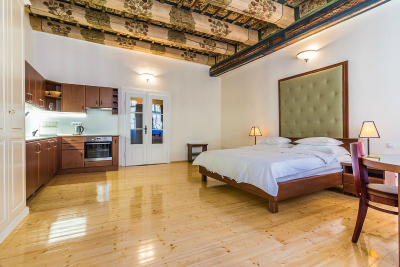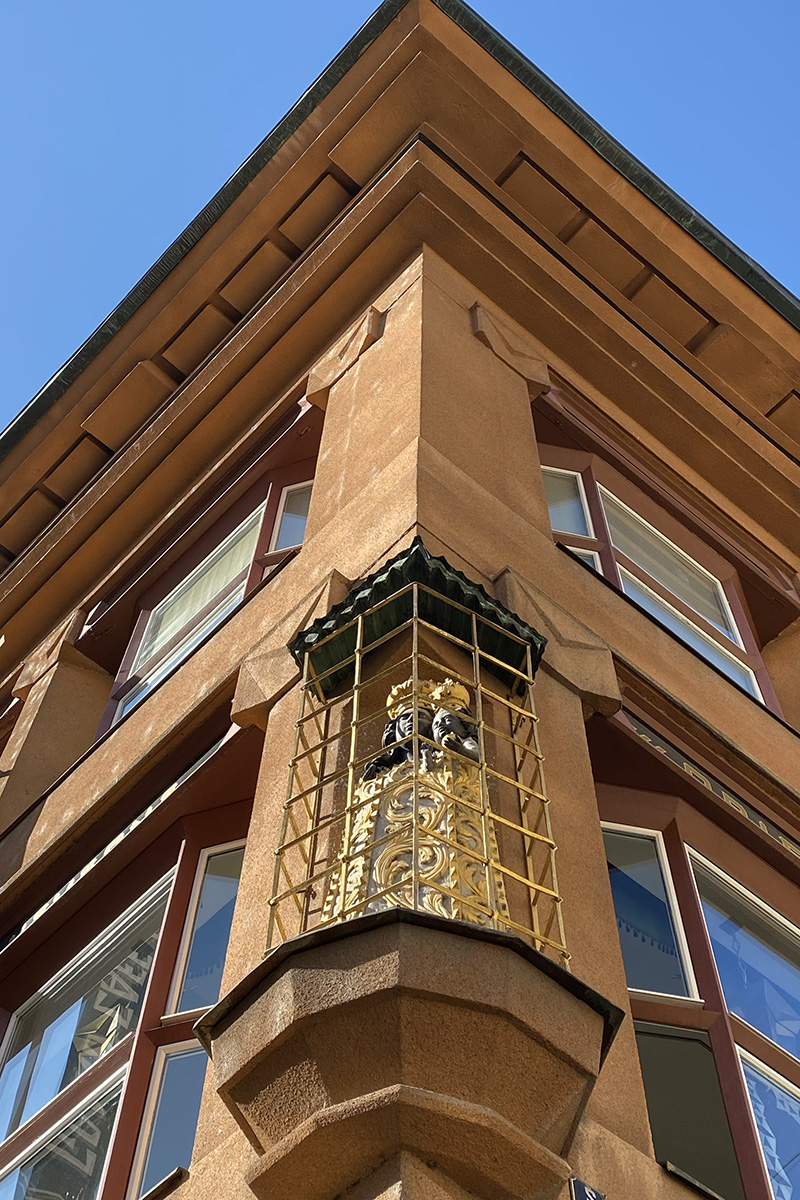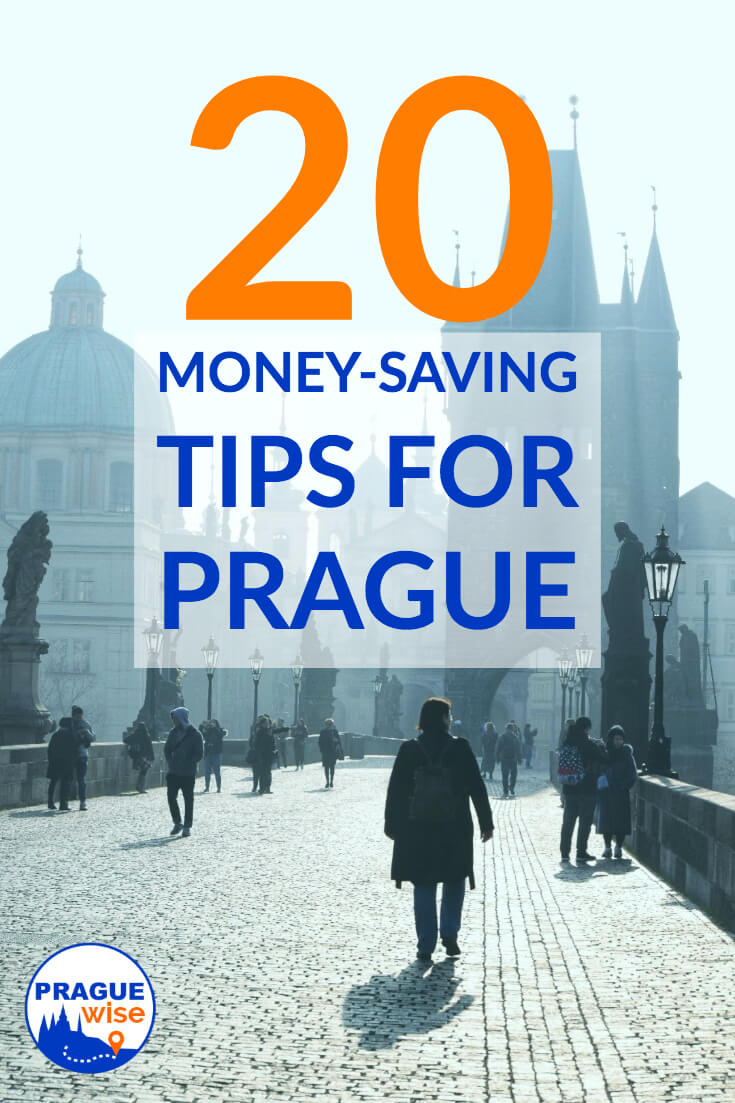- Home
- Czech life
- Czech Republic Currency
Visitor guide to Czech republic currency
Czech Republic currency is still standing proud, like an underdog in the middle of the eurozone. This position is not surprising for a country so passionate about its culture. The Czech crown is here to stay, so far.
But let's not get too serious here! I want to take a fun and practical look at this Czech currency called the koruna (crown).
What does this underdog look like? What can he buy in Prague? And, how does it compare to your currency?
Fun with Czech Currency
Czech Republic currency has six coins and six banknotes. The smallest amount is 1 CZK and the largest is 5000 CZK.
And if you're like me, you'll enjoy the repetitive nature of the currency's denominations: 1, 2, 5, 10, 20, 50...
But if that doesn't impress you, try adding one of each denomination altogether. You get 8888 CZK.
1 + 2 + 5 + 10 + 20 + 50 + 100 + 200 + 500 + 1000 + 2000 + 5000 = 8888 CZK
Is this curious number the secret code to access the crown jewels or a safe in the president's office? Is there a conspiracy theory here somewhere?
Anyway, the country also uses invisible money. Well, not exactly, but bear with me - I'll try to explain.
Years ago Czech Republic withdrew its smallest coins from circulation. These are called heléře. But to keep things interesting, stores still list prices with heléře.
For example, that T-shirt you are dying to buy in Prague that says Czech Me Out costs 299.90 Kč. That mysterious .90 are heléře.
But don't worry. The .90 is rounded up. So the price is simply 300 Kč. Ah, the magic of consumerism.
What it buys, We went shopping
In the video I mention a few things that one euro can buy in Prague. But, let's put a more tourist filter on this concept.
Here is a fun example of a day in Prague with a few things to do and buy. I hope this gives you an idea of how things are priced locally.
Please note... This is a very full day. It's simply meant to give you some budget perspective.
A day (of prices) in Prague...
You wake up from your Airbnb and need a coffee fix. So you head to the Starbucks in Malá Strana and get a latte for 129 Kč. Then, you want to beat the crowds so you walk across Charles Bridge. On Old Town Square you decide to get a bird's eye view and buy a ticket to the tower for 250 Kč.
You've worked up an appetite after seeing the magical views and you can't resist that fried cheese and beer at Lokal Restaurant for 257 Kč. After lunch, you go to meet a friend who has just driven to Prague from Český Krumlov. She mentions the high prices of parking (600 Kč/day) and gasoline (32 Kč/liter).
The two of you need to catch up on old times, so you suggest a two hour river cruise (450 Kč/person). After the cruise, you walk through Old Town and then have a light dinner at Lehká Hlava (265 Kč/person).
After dinner, your friend surprises you with tickets to see Don Giovanni at the Estates Theatre (550 Kč/ticket). What a great friend!
After the opera you walk back across Charles Bridge (which is gorgeous at night) on your way to your Airbnb.
Wow, that's a full day in Prague. You've packed a lot into a short time. Get some sleep tomorrow you are taking the bus to Dresden (300 Kč).
Watch out for these Czech currency scams
Like many cities, Prague has its share of scams. So it's good to be aware of their existence. And it's smart to get acquainted with Czech Republic currency before arriving. Know what it looks like and be aware of how you use it.
Here are a few related to exchanging money and currency risks.
- Never exchange money on the street!
I know this sounds obvious, but tell that to the couple I met last year. They had just changed their 400 EUR for a pile of useless Uzbek soms. This is a serious problem in Prague. So, if someone approaches you and offers to exchange money, just ignore them. Walk away.
- Keep your money in your pocket!
This scam infuriates me, because I was a victim of this 20 years ago in Budapest. Basically, someone approaches you and says they are the police. They might flash a fake badge or document to convince and confuse you. Then they ask to see your money, saying that they are investigating possible counterfeit money. This example can occur immediately after you exchange money somewhere. Don't show them anything. Again, just walk away.
Did you know?
The name of Czech Republic currency, koruna, originally comes from the Austro-Hungarian krone. After the demise of this empire in 1918, Czechoslovakia was the only country to continue to use the currency's name.
More Currency talk
You will find more information and practical tips on our Czech currency page. There we get into where to exchange money in Prague, credit card tips and some euro talk.
To keep up with official currency news, visit the Czech National Bank.
